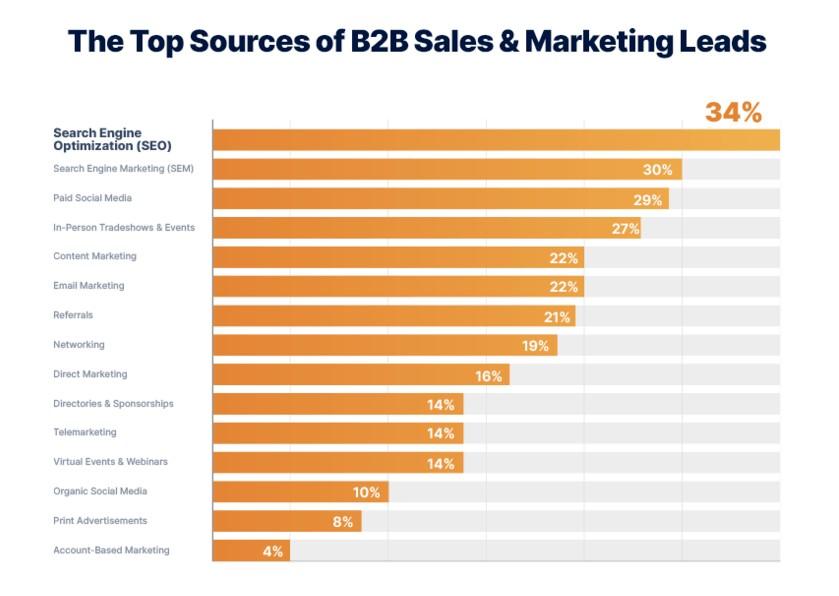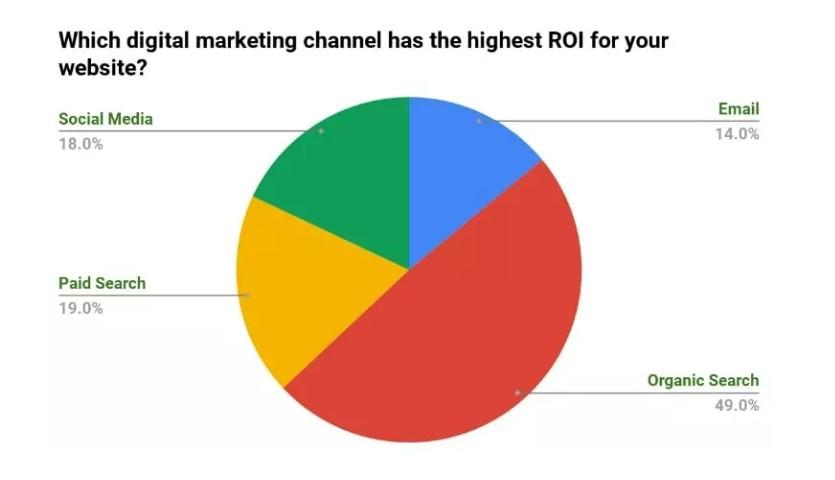Buy-In From The Boss: How to Convince Your Boss to Do SEO
Daniel Trick
Aug 05, 2024
7 min read
You know SEO is valuable.
But, getting buy in from the boss to invest in SEO can be a tough sell. (And no, we don’t mean Bruce Springsteen.)
Your boss or manager might see it as just another expense or doubt its value compared to traditional marketing.
You need to frame SEO as an opportunity they can’t afford to pass up.
And that’s what we’re going to show you how to do in this guide.
We’ll reveal a foolproof three-step plan to convince your boss why SEO is worth the investment. You’ll learn how to make a strong, persuasive business case.
Here’s what we’ll cover:
- Collect the data you need
- Develop a plan
- Deliver your pitch
Need to get buy-in from your clients instead? Check out our guide to explaining SEO to clients here.
Step 1: Collect the Data You Need
The first step is to collect information on your current performance. This data will help you build a strong case for why search engine optimization (SEO) is needed.
Assess Current Performance
You need to get a clear picture of how your site is performing.
Use Google Analytics to see how much website traffic you generate from search engines. Is organic traffic increasing, decreasing, or staying the same?
Next, check your keyword rankings. SEO tools like Semrush can show you the keywords you’re currently ranking for and their positions.
You can also use the Keyword Gap tool to compare your keyword rankings to your competitors. It visualizes the data, making it easier to show your current SEO performance to your boss.

Competitor Analysis
Fear of missing out (FOMO) is a powerful persuasion tactic.
Showing how your competitors are doing with their SEO strategies can help you make the case for SEO at your company.
Use Semrush or Ahrefs to analyze the SEO performance of your top competitors. Look at their organic traffic, keyword rankings, and the types of content they publish.

Benchmark your current SEO performance against theirs. Do they have more comprehensive keyword coverage? Is their content much more engaging?
The goal is to identify gaps in your strategy and areas for improvement. You have to prove to your boss that SEO is necessary to compete in search results.
Step 2: Develop a Plan
The next step is to use the information you have gathered to develop an SEO plan. You’ve identified a problem. Now, you have to provide the solution.
Identify the Resources You Need
Make a list of all the resources you need to implement your SEO strategy. This might include hiring experts, investing in tools, and allocating time for your team to work on SEO.
Think about the tasks you can perform in-house and what you’ll need to outsource. For example, you might want to handle on-page SEO optimization in-house and outsource content writing and link building.
Create a budget
How much is this all going to cost?
This is one of the first questions your boss will ask, so you need to be able to provide an accurate answer.
Create an SEO budget with estimates for each expense.
SEO Tools: $200 – $500 per month
Content Creation: $50 – $300 per blog post
Technical SEO: $1,000 – $3,000
Link Building: $500 – $2,000 per month
You also need to account for the amount of time your internal marketing team will dedicate to SEO.
Make sure you have an explanation for why each cost is necessary. For example, SEO tools are essential for tracking performance and keyword research.
Outline the Expected Results
Now, it’s time to highlight the potential impact of your SEO strategy.
Be specific about what you can achieve and in what time frame. Start by forecasting how much additional traffic you could generate by improving your SEO.

Provide a realistic timeline. You don’t want to overpromise and then have to explain why you haven’t hit your targets in a few months.
SEO is a long-term strategy. It typically takes several months to see significant improvements in organic search results.
If SEO is a “test” for 3 months and you panic when you aren’t ranking #1 over competitors who’ve been doing it for a decade, please don’t invest in SEO.
— Jeremy Moser (@jmoserr) March 12, 2023
To make the process easier for your boss to understand, use a phased approach:
Short-Term (0-2 months): Fix technical issues, start on-page optimization, content planning, and foundational link building.
Medium-Term (3-6 months): Scale up content creation and link building, and see initial improvements in rankings and traffic.
Long-Term (6-12 months): Achieve higher rankings, significant traffic increases, and measurable impact on revenue.
This shows your boss a structured path to success. It makes the benefits of investing in SEO easier to understand.
Step 3: Deliver the Pitch
You’ve done your homework. Now, it’s time to pitch your strategy and frame it in a way that aligns with your business goals.
Align with Business Goals
Your boss isn’t going to care about increasing domain authority or what you do with image alt text.
What really matters is how improved SEO will impact the business. Connect the dots between SEO and your broader company goals.
A reminder for every SEO:
Always tie your recommendations to business goals.
— Kristina Azarenko (@azarchick) July 10, 2024
One of the biggest advantages of SEO is attracting people actively searching for products or services like yours.
According to a recent survey, SEO is the top source of leads for B2B businesses:

Visitors from search engine results are much more likely to be interested in what you offer. That makes them higher quality leads.
You can also emphasize how SEO can help you reduce your Google Ads costs.
Look at what you spend on paid advertising per month. Each click costs money, and those costs can add up quickly.
A well-executed SEO strategy can help improve your organic search rankings for the same target keywords. This means you can bring in traffic without paying for each visitor.
Over time, this can significantly reduce your need for paid ads. Your SEO efforts can help you maximize your marketing budget.
Quantify the ROI
SEO typically provides a good return on investment. In a recent survey, 49% of marketers said that organic search is the digital marketing channel with the highest ROI:

But you will have to do more than reference third-party surveys to convince your boss that SEO is a worthwhile investment.
You need to quantify the ROI.
Create a projection based on the estimated increase in organic traffic and your average conversion rate. This will give you a rough estimate of how many more customers you can expect to generate with SEO.
For example, you might estimate that improved SEO can help you attract an additional 70,000 visitors over the next six months. If your average conversion rate is 5%, that’s 3,500 new customers.
With an average order value of $40, you could expect to generate $140,000 in additional revenue.
Compare this with the cost of implementing your SEO strategy. If you spend $40,000 to earn an additional $140,000, the ROI is clear.
By digging into the data and accurately estimating the outcomes, you can make a compelling business case for SEO.
Overcoming Objections
You will face some pushback. Your boss wouldn’t be doing their job if they didn’t have a few objections. How you handle these concerns can make all the difference in getting them on board.
SEO is a Scam
If your company isn’t currently doing SEO, it might be because they had a bad experience with an agency in the past. This can make them think that SEO is full of scams and shady providers.
You need to show that SEO is an essential part of digital marketing. Emphasize that SEO focuses on creating valuable content and improving your website to offer a better user experience.
Use case studies of similar websites and highlight how your competitors are succeeding with SEO to back up your claims. This data will help you prove that SEO is a credible investment.
SEO Takes Too Long
There is no getting around this. SEO does take time to deliver significant results. It’s a long-term strategy, but it delivers lasting benefits.
To prove the SEO process is working, you should initially focus on a few quick SEO wins. These could include technical fixes, on-page optimization, and targeting ‘low-hanging fruit’ keywords.
And you don’t have to drop your ad campaigns entirely just because you’re launching an SEO project. You can keep your ads running while you grow your organic online visibility.
What If We Get Penalized by Google?
Your boss might have heard horror stories about Google penalties wiping out organic traffic overnight.
That can happen. But it’s very unlikely if you abide by Google’s guidelines.
Manual penalties are rare.
Remember that Google “penalties” are rare
You’ve probably not been penalised, @google has just realised loads of your competitors are better
So stop whinging, work out why and be better. It’s not witch hunt, refrain from trying to game the system and focus on being the best pic.twitter.com/TwLvW31ftA
— Whitworth (@WhitworthSEO) October 27, 2023
There’s no trick or hack to rank well. You need great content, a technically sound website, and effective white hat link building.
Explain how you will avoid black hat SEO tactics and base your strategy on ethical SEO practices.
We’re Doing Fine. We Don’t Need SEO
If your company is already generating plenty of leads and sales, your boss might not see the need for SEO.
You have to show how SEO can help you reach new audiences and cement your position in the market.
Even if your current online marketing strategy is working well, you’re letting your competitors secure a stronger position by not competing in the SERPs. Investing in SEO can help you stay ahead of the competition.
Building a Strong Business Case for SEO
You need to build a strong business case to convince your boss to invest in SEO.
Do your homework, make a plan, and create a compelling pitch that focuses on the things that your boss cares about:
Growth and ROI.
That’s how you prove SEO is a smart investment.
Become a Pro at SEO
Join 65,000 others and learn the secrets to SEO success with our weekly blog posts.
